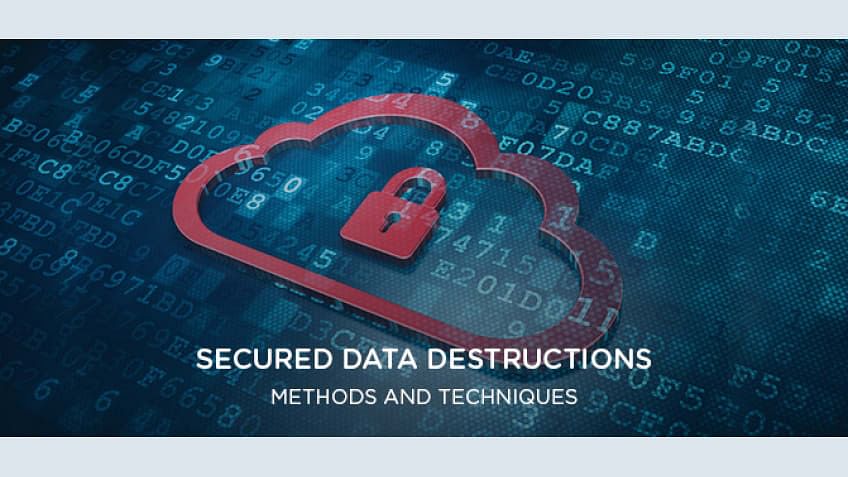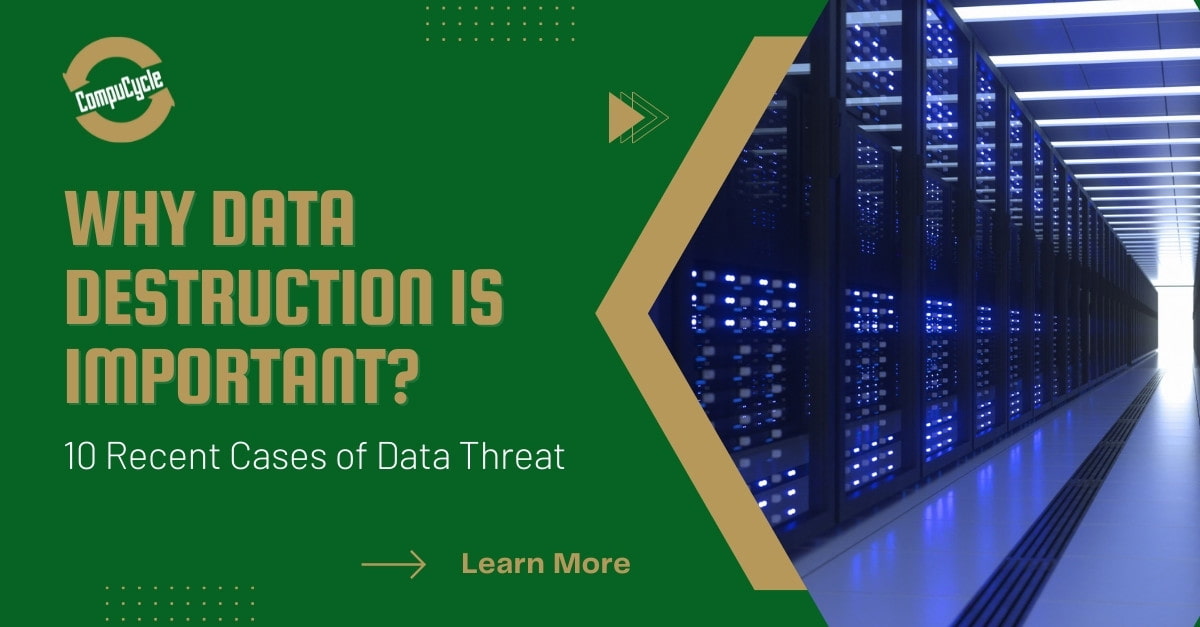The Importance of Effective Information Devastation Practices in Safeguarding Sensitive Information and Ensuring Computer Safety
In a period where information breaches are progressively usual, the value of reliable information devastation techniques can not be overemphasized. Implementing durable information destruction techniques not only minimizes these risks yet additionally lines up with lawful conformity demands, making certain that organizations maintain their online reputation and foster client trust.
Recognizing Data Devastation
Comprehending information devastation is crucial in today's digital landscape, where sensitive info can conveniently be compromised. Effective data devastation involves not just making certain yet deleting files that data is irretrievable with extensive methods. This procedure is essential for organizations that take care of private client information, intellectual residential property, or inner documents, as any breach can cause severe monetary and reputational consequences.
Information devastation encompasses different methods, consisting of shredding physical media, degaussing magnetic storage space gadgets, and utilizing software-based services that overwrite data multiple times. Each method serves a details objective and must straighten with the level of sensitivity of the information being taken care of. For instance, physical destruction is commonly favored for hard drives containing extremely confidential information, while software program approaches could suffice for less sensitive information.
Furthermore, sticking to industry criteria and guidelines, such as the General Information Protection Policy (GDPR) or the Health Insurance Coverage Transportability and Accountability Act (HIPAA), is necessary for conformity and to reduce legal risks. Organizations must create a durable data destruction plan, train workers on finest practices, and regularly examine their treatments to guarantee that all sensitive details is thrown away safely and efficiently.
Threats of Inadequate Practices
Insufficient data destruction methods expose companies to substantial risks that can have far-ranging repercussions. When sensitive details is not correctly disposed of, it continues to be susceptible to unauthorized accessibility, which can result in information breaches and identification theft. Such events not just jeopardize the security of individuals yet likewise tarnish the company's track record, leading to a loss of consumer count on and possible financial effects.
Furthermore, governing compliance is progressively stringent in lots of sectors. Failure to follow information destruction guidelines can result in significant penalties and lawful actions against companies. These penalties can strain funds and divert interest from core company procedures.
On top of that, the misuse of residual information can bring about copyright theft or business reconnaissance, threatening competitive advantages (data destruction). The impact of insufficient information devastation expands beyond immediate monetary losses; it can likewise cause lasting damages to brand name integrity and market position

Organizations should acknowledge that information protection is not only about preventing breaches; it also encompasses the responsible administration of data throughout its lifecycle. Overlooking efficient data damage procedures can have devastating ramifications, highlighting the necessity for robust measures to mitigate these risks.
Best Practices for Information Devastation
Applying efficient data damage practices is important for safeguarding sensitive details and keeping compliance with regulative standards. Organizations should take on a multi-faceted strategy to make sure that data is irretrievable, thus preventing unapproved accessibility and prospective breaches.
First, information must site web be categorized based upon level of sensitivity, enabling organizations to use proper devastation techniques tailored to the degree of danger. For digital information, utilizing software-based data-wiping devices that abide by industry criteria can efficiently overwrite existing data. Physical devastation methods, such as shredding or degaussing, are crucial for gadgets that store delicate info, making certain total eradication.
Developing a clear data retention plan is vital, describing the length of time various types of details ought to be preserved before devastation. Routine audits of information storage systems are additionally required to recognize unneeded or out-of-date information needing removal.
In addition, training employees on the relevance of data damage and the details procedures to adhere to fosters a culture of safety and security within the organization. Preserving documents of information destruction processes supplies liability and sustains compliance with exterior laws and internal policies. By adhering to these best practices, organizations can substantially minimize the threats connected with data exposure.
Legal and Compliance Considerations

Failing to comply with these guidelines can cause severe charges, including considerable penalties and reputational damages. Organizations should carry out a robust data damage plan that aligns with these lawful structures and provides clear guidelines on the appropriate methods of data disposal, whether physical shredding or digital cleaning.
In addition, maintaining paperwork of information devastation activities is vital for showing conformity during audits or evaluations. By focusing on lawful and conformity considerations, organizations can improve their information security pose and foster count on with try this website stakeholders and customers, inevitably adding to an extra secure data management atmosphere.
Benefits of Effective Data Damage
Efficient data damage methods expand past plain conformity; they offer significant advantages to organizations that prioritize them. By guaranteeing that sensitive info is irretrievably ruined, companies minimize the threat of information violations and the prospective monetary repercussions connected with them. This proactive approach not just safeguards versus unapproved gain access to however also enhances the general dependability of the company in the eyes of stakeholders and customers.
Implementing durable information damage techniques, such as physical destruction of storage space tools or sophisticated data cleaning strategies, contributes to the strengthening of a company's cybersecurity stance. data destruction. It minimizes the possibility of intellectual building burglary and safeguards exclusive info, thus maintaining an one-upmanship on the market

Verdict
In conclusion, efficient information devastation practices are vital for guarding delicate information and enhancing general computer safety. By applying comprehensive techniques such as software, shredding, and degaussing overwriting, organizations can reduce the dangers connected with unapproved gain access to and information breaches. Adherence to regulative requirements, including GDPR and HIPAA, additional strengthens compliance and safeguards against legal repercussions. Ultimately, a commitment to durable information devastation approaches cultivates a society of obligation, consequently enhancing an organization's cybersecurity position and maintaining client trust.
